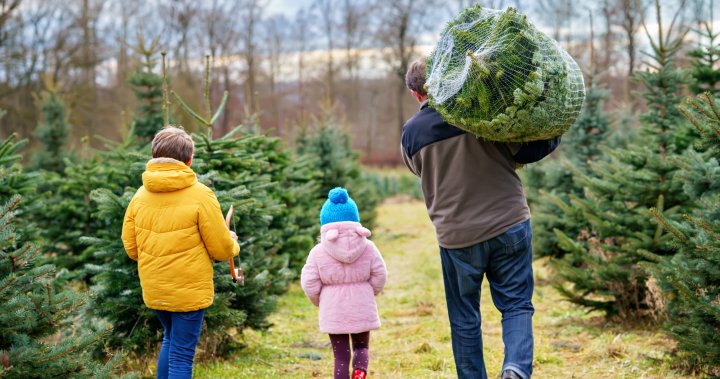The tradition of cutting down a Christmas tree is a beloved part of the holiday season for families across Canada. However, this cherished practice is facing significant challenges as the Christmas tree industry grapples with soaring demand and environmental hurdles. Since the onset of the COVID-19 pandemic in 2020, there has been an increased interest in real Christmas trees, with many families choosing to create lasting memories by cutting down their own trees. As a result, tree farms are experiencing record crowds and some have reported being sold out for the season. As Shirley Brennan, the executive director of the Canadian Christmas Tree Association, notes, the industry has undergone dramatic growth over the last few years. However, the cyclical nature of tree farming—where trees take up to a decade to mature—means that meeting current demand is a formidable challenge for many growers.
Experts warn that the soaring demand for Christmas trees comes amid a backdrop of declining supply. Between 2011 and 2021, Canada saw a net loss of over 1,000 Christmas tree farms and more than 20,000 acres of relevant farmland, according to Statistics Canada. This decreasing trend in farming operations is compounded by an aging workforce; many current growers are nearing retirement, and the younger generation is often dissuaded from entering the profession due to the long investment time required and the laborious nature of the work. Scott Lunau, a seasoned tree farmer from Ontario, shares his concerns about the industry’s future. He highlights that climate change has led to increasingly unpredictable weather patterns, making it hard for his seedlings to survive the crucial first years. The challenges of finding willing labor to help maintain these operations further complicate matters.
Lunau’s experience underscores the pressures facing Christmas tree farmers, which include the rising costs of essential materials like fertilizer and gas, along with the physical demands of the job. The realities of working outdoors can deter potential laborers from entering the field, emphasizing the need for a more sustainable labor market. Furthermore, the emotional toll of maintaining a family farm can be heavy; Lunau experienced this firsthand with the recent loss of his wife, which adds to the already significant burdens of farming and running a business. Despite the obstacles, he and other farmers remain committed to their craft, though there is an underlying anxiety about whether they will be able to continue in the industry for years to come.
Despite these pressing challenges, the Canadian Christmas tree industry has some silver linings. Reports indicate that the 2023 harvesting season in Ontario has benefited from favorable weather conditions, allowing farmers to thrive even amidst the general difficulties faced by the sector. The recent influx of customers shows a deep-rooted love for real Christmas trees and the connective experience they provide. However, long-term sustainability requires addressing the industry’s broader structural issues, particularly the aging workforce and the lack of younger entrants. The Canadian Christmas Tree Association is actively engaged in encouraging new generations to participate in tree farming, often by combining it with other farming ventures that are more immediately profitable.
Brennan points out that while older farmers might be retiring, there are signs of new interest in the industry from young growers who are getting creative by integrating agritourism elements into their farms. Such innovations are essential in adapting to the changing landscape of farming in Canada. Many young farmers are starting their ventures with quicker-maturing crops like sunflowers and lavender, thereby establishing their businesses financially before eventually transitioning into Christmas tree cultivation. This strategy represents a promising method for revitalizing an industry in need of fresh talent and ideas.
Looking ahead, climate change continues to pose a significant challenge for farmers across the country. The Canadian Christmas Tree Association is collaborating with institutions like the University of Waterloo’s Christmas Tree Lab to explore innovative methods that allow farmers to adapt to evolving weather patterns. Brennan recognizes that the long-term viability of the industry requires immediate action; otherwise, the future could become bleak for Christmas tree farming in Canada over the next few decades. The landscape of family traditions tied to real Christmas trees is at a critical juncture—while demand is high, the industry’s sustainability hinges on the collective efforts of current and future generations of farmers to navigate an increasingly complex environment.










